7 Alternative Roofing Materials That You May Not Have Considered
Think outside the shingle


With the average cost for installing a new roof running between $5,800 and $13,000, it is understandable that you may look for ways to save money on this expensive (but very important) home project. You might already know that asphalt is a popular, budget-friendly roofing choice, but what else is out there? If you are looking for a more affordable roofing material or one that makes your home stand out in a good way, these alternative roofing materials might suit you well.
| Type | Cost | Benefit |
|---|---|---|
| Synthetic slate | $2,250–$10,000 | Budget-friendly |
| Single-ply roofing | $2,250–$10,000 | Low cost |
| Green roofing | $12,000–$40,000 | Eco-friendly |
| Shingle overlay | $3,500–$7,800 | Affordable |
| Composite shingles | $8,000–$20,000 | Long-term savings |
| Thatched roof | $30,000–$55,000 | Sustainable |
| Built-Up Roofing | $3,200–$11,000 | Affordable |
1. Synthetic Slate

Also known as composite, synthetic slate offers the look of slate tiles without the high cost. Composite tiles can be an excellent choice if you are concerned about environmental impact since many manufacturers use recycled materials, including post-industrial plastics, hemp fibers, and some discarded roofing materials, to make them. In addition, the tiles are very customizable, coming in a variety of shapes, colors, and sizes.
One thing to keep in mind is that some synthetic slates do not meet industry-wide fire rating specifications, so composite might not be the best choice if you live in an area prone to wildfires. Check with the manufacturer and a local roofing professional to choose the right material for your location and home. Your contractor may suggest installing a layer of fire-retardant material beneath the tiles.
| Pros | Cons |
|---|---|
| Affordable | Not fire-proof |
| Luxury look | Moderate efficiency |
| Lighter than slate | Can fade in sunlight |
| Very long lifespan | Not for extreme weather |
Best For: Luxury look on a budget
2. Single-Ply Roofing
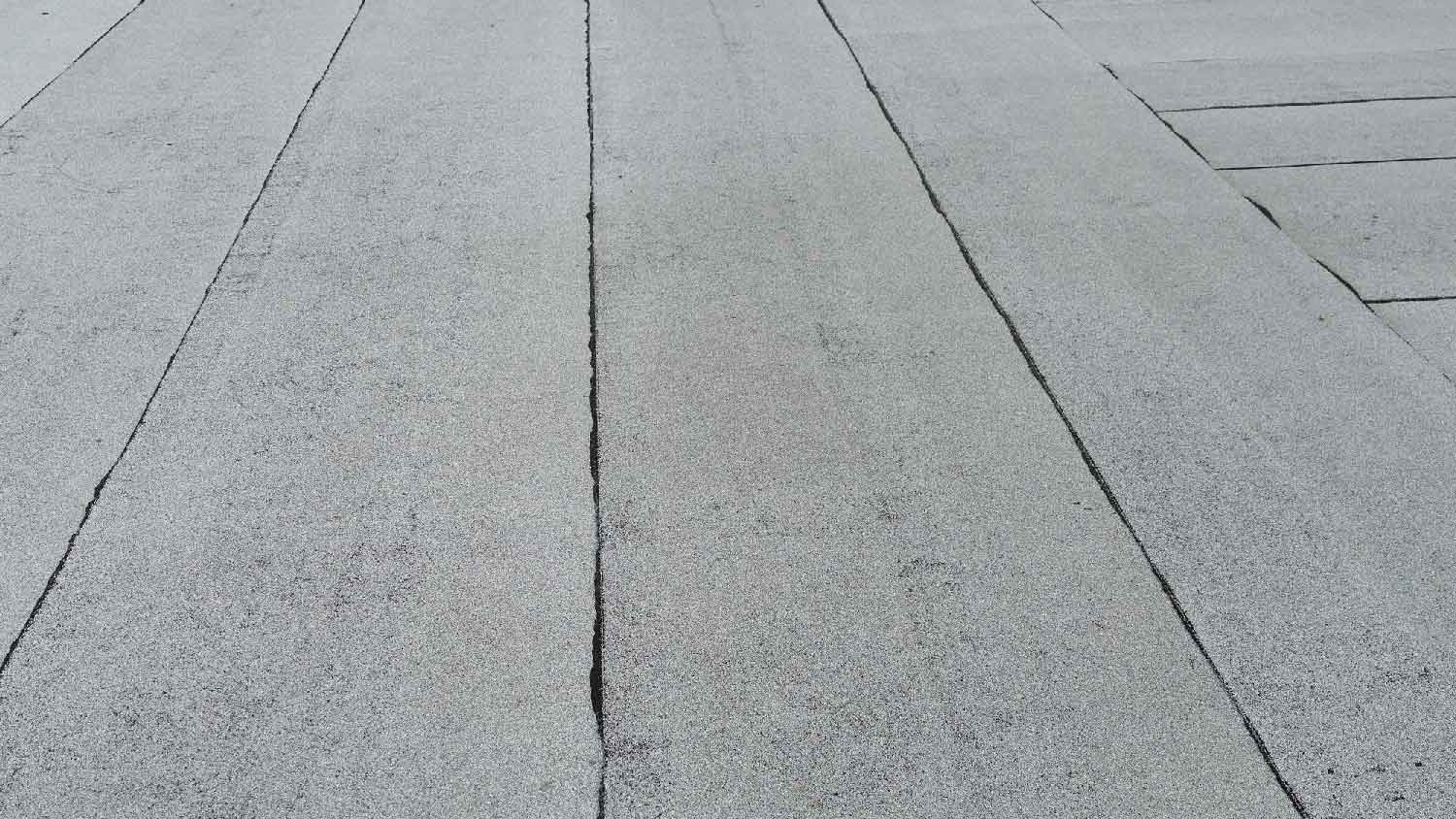
An option for low-slope and flat roofs, single-ply roofing consists of large, flexible sheets that your contractor places over your roof decking and seals using adhesive. The sheets consist of thermoplastic polyolefin (TPO), ethylene propylene diene monomer (EPDM), or polyvinyl chloride (PVC) and are resistant to UV radiation.
Single-ply roofing has some drawbacks. It often has a shorter lifespan than some other materials, sometimes only lasting for around ten years. It punctures easily given its thinness, so it’s not great for extreme weather where tree damage is common, and the seams may be vulnerable to leaks, especially since this is a flat roof material.
TPO vs. EPDM vs. PVC
TPO is a newer material than EPDM. While TPO often involves highly reflective white sheets, it is also available in tan, gray, green, blue, and red. Most manufacturers add titanium dioxide to the materials, which protects against UV rays. During installation, TPO requires a hot air gun to meld the seams and fuse them together.
EPDM, which has been on the market for decades, often consists of a high-performance rubber compound that offers heat retention and strong resistance against the elements—a better choice for colder climates. Unlike TPO, roofers install EPDM using seam tape. EPDM is a more affordable roofing material than TPO, in large part because the installation process is much simpler, saving you on labor costs.
PVC is another single-ply roofing material. When comparing TPO and PVC roofs, PVC is more expensive up front but tends to last longer, usually around 30 years. PVC is a more durable material, and the seams provide better protection from the elements, so it will often be the more affordable roofing option in the long term.
| Pros | Cons |
|---|---|
| Affordable | Only for flat roofs |
| Resists fading | Limited lifespan |
| Lightweight | Prone to leaks |
Best For: Flat roofs in moderate climates
3. Green Roofing
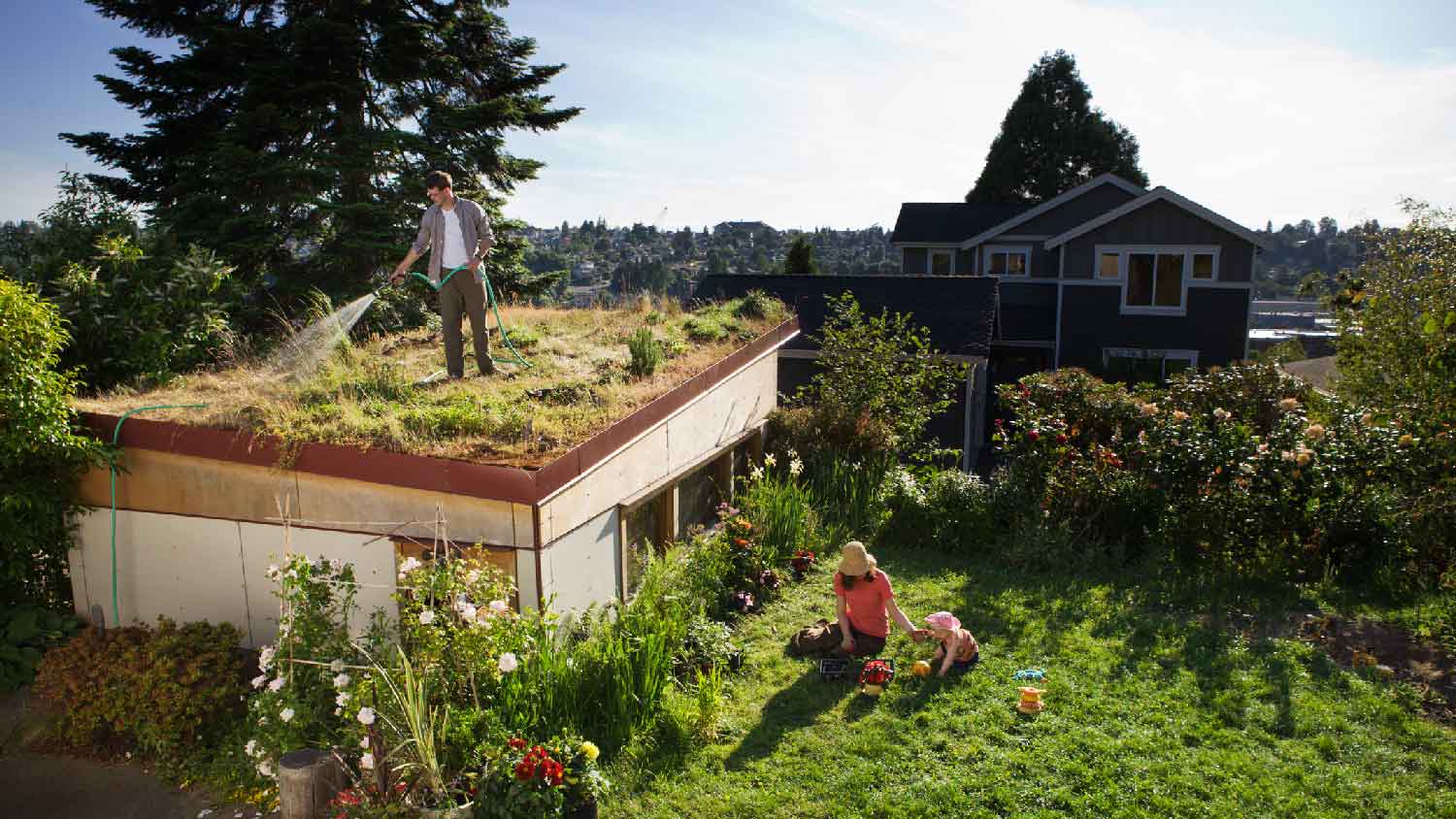
A green roof consists of a waterproofing membrane installed over your roof decking, substrate, and vegetation, which can include moss, herbs, and other plants. A green roof makes a bold statement, both in terms of a unique aesthetic and your commitment to sustainability. As an added benefit, moss (or another organic material) can provide excellent insulation and absorb rainwater.
These types of roofs require very specific layers to support the greenery on top, and the materials, especially when soaked in rainwater, can get extremely heavy. In many cases, you’ll need structural reinforcements in order for this type of roof to be a viable option for your property.
Extensive vs. Intensive
There are no firm rules to define the two types of green roofs, but generally speaking, an “extensive” green roof has a shallow growing depth (less than six inches), which weighs less but only allows for a small selection of plants.
“Intensive” green roofs have more soil (and thus, more weight on top of your home), allowing for a wider variety of plants, but requiring more maintenance and watering. Intensive green roofs are much more likely to necessitate structural changes to your home to support the weight of the substrate.
Blue Roofing
Blue roofing is an excellent option for homeowners who want to minimize their environmental footprint and save money on their utility bills. While the more well-known green roofing involves layering moss and plants on your roof, blue roofing is all about water storage and mitigating flood damage. It’s also a much more affordable roofing option than green roofing.
Blue roofs consist of a series of small shallow tanks that catch and temporarily store rainwater. After the storm passes, the tanks release the water slowly to mimic the normal absorption of water into the land around your structure.
| Pros | Cons |
|---|---|
| Eco-friendly | Expensive |
| Good water management | Heavy roof option |
| Beautiful aesthetic | Not always up to code |
| Good insulation | High maintenance |
Best For: Sustainability
4. Shingle Overlay
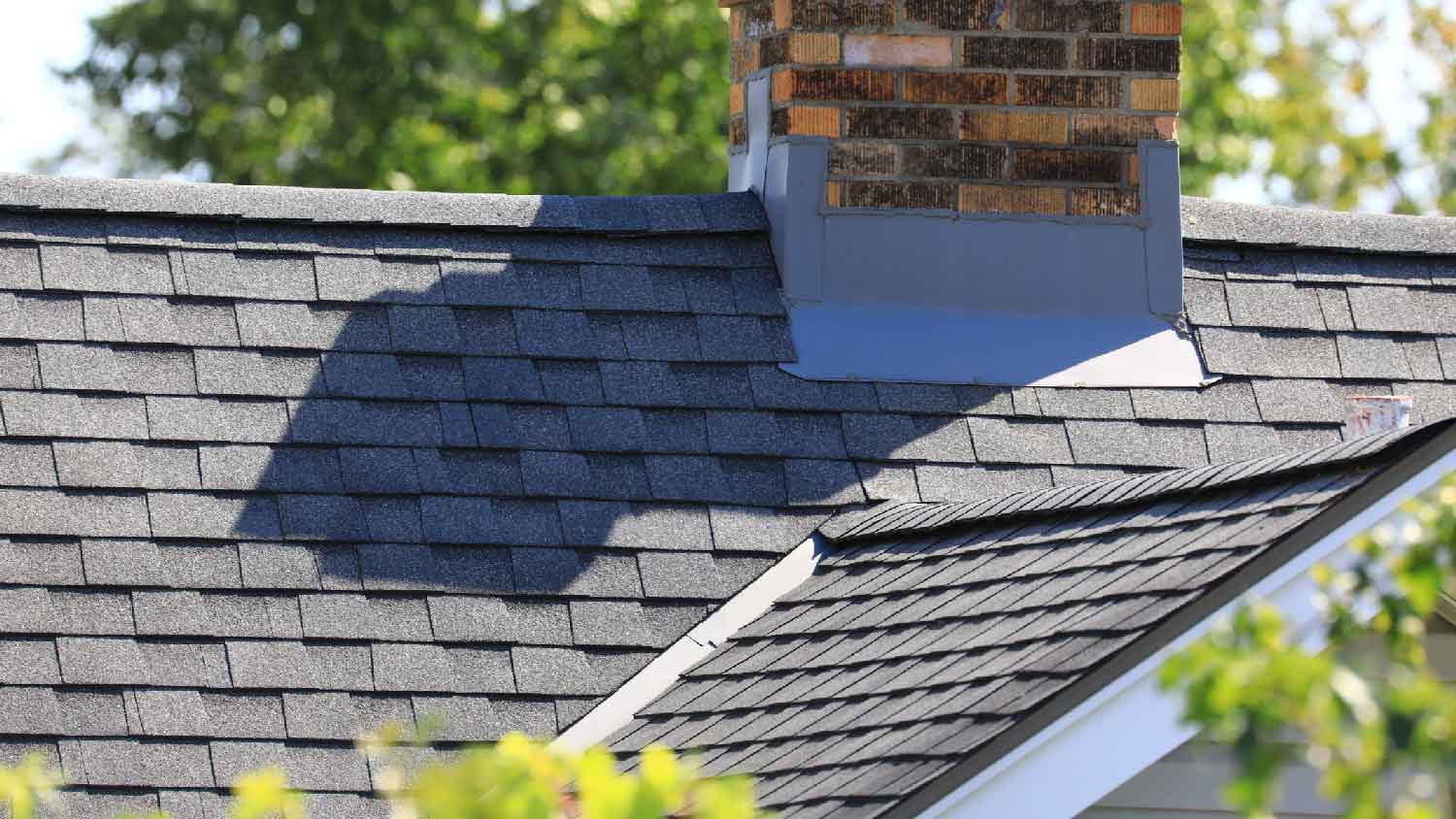
If you are stressed about the cost of replacing your whole roof, you may want to ask a professional if a shingle overlay could work for your home. Shingle overlay—when you simply add a layer of new shingles over any damaged areas of your roof—is often a much more affordable project than a whole roof replacement because you don’t have to pay for the removal and hauling away of your old roof, which can cost up to $5 per square foot.
A shingle overlay could be an option for you if:
Your roof decking and underlayment aren’t damaged.
Your old shingles are damaged, but the damaged portion is small and contained.
You only have a single layer of shingles on your roof.
There are some drawbacks to doing a shingle overlay. Some roofing companies will not do the job because they do not want to accept liability for covering up damage they cannot see.
“If you cover up the old roof, you cannot inspect the decking of the roof for rot caused by leaks,” says Ami Feller, Expert Review Board member and owner of Roofer Chicks in New Braunfels, TX. “Also, many manufacturers negate their manufacturer warranties on overlays. Tearing off the old roof is not a large percentage of the roof cost and, in my opinion, is not worth the increase in risk and loss of warranty coverage.”
| Pros | Cons |
|---|---|
| Affordable option | |
| Faster installation | Adds to roof weight |
Best For: Saving money on asphalt roof replacement
5. Recycled Composite Shingles

Recycled composite shingles are a great option if you are looking for something that is eco-friendly. Not all composite shingles contain recycled materials, so check with the manufacturer if you are unsure.
Manufacturers make these shingles from recycled rubber and plastic, including things like tires and milk bottles. They mimic other materials like slate and cedar shake and have many positive qualities, including good wind, fire, impact, and fade resistance. These shingles are also recyclable, so you can feel good about keeping waste out of landfills throughout the entire roofing process.
Although this isn’t the most budget-friendly roof option up front, this type of roof tends to last for up to 40 years, so you’re likely to save money in the long run over choosing a standard asphalt shingle roof.
| Pros | Cons |
|---|---|
| Eco-friendly | Expensive up front |
| Long-term savings | Not widely available |
| Long lifespan | Newer roof product |
Best For: Long-term savings on roof replacements
6. Thatched Roofs
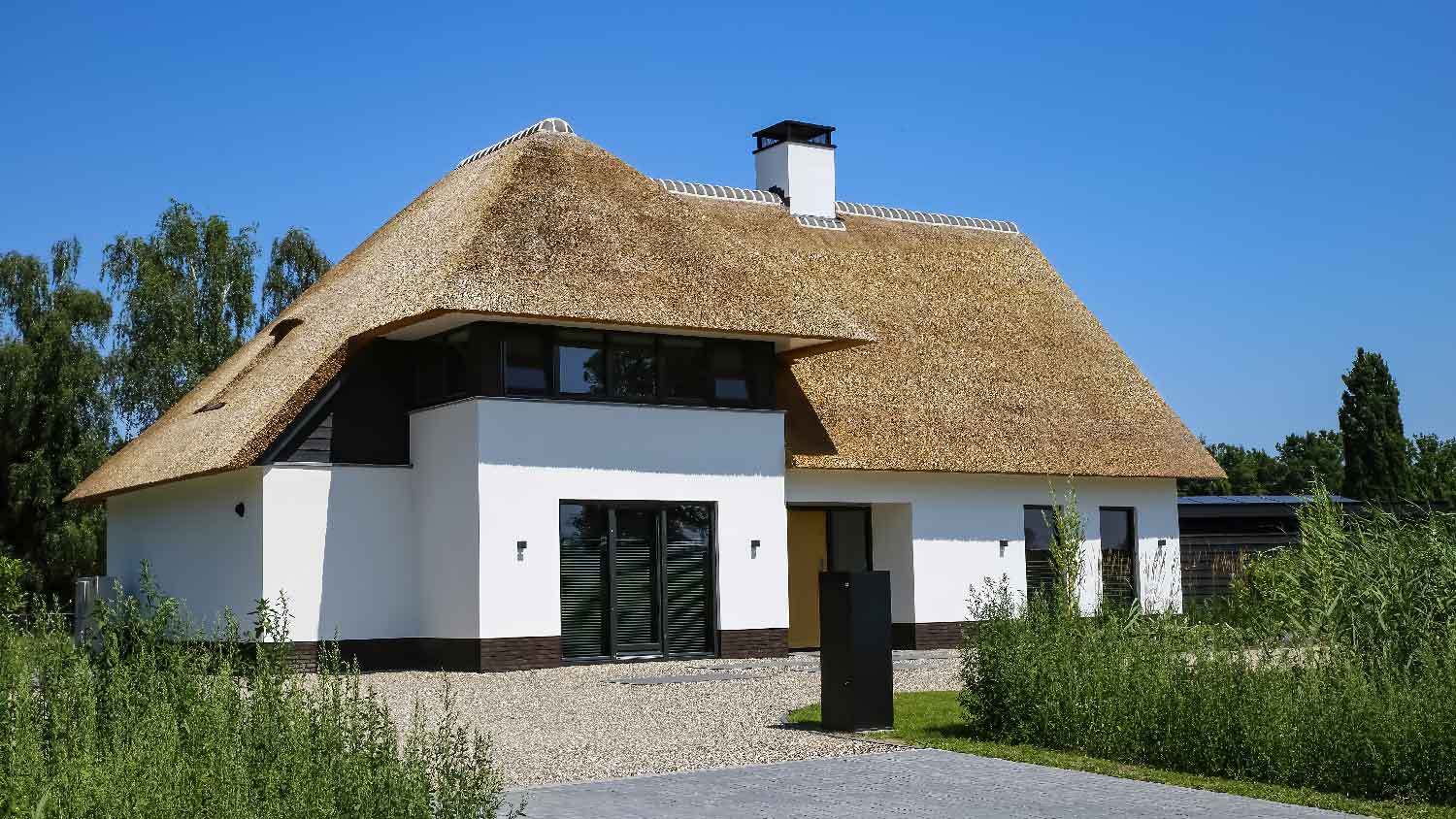
Thatched roofing is a centuries-old method, dating back as far as 8,000 BCE. Highly specialized roofing contractors construct this type of roof out of water reeds or straw, and since this roof type isn’t popular in the U.S., you may struggle to find a roofing contractor who can tackle this for you. Thatched roofing offers many great advantages, like excellent insulation for energy-efficient roofing, eco-friendliness, and a solid lifespan of up to 50 years.
However, thatched roofs cost more than standard shingles, and they require more maintenance. Thatched roofs aren’t permitted by building codes in some areas because they aren’t fireproof. Where they are allowed, you’ll often need to pay for ongoing maintenance to add a fireproofing spray every few years.
| Pros | Cons |
|---|---|
| Eco-friendly | High maintenance |
| Great insulation | Prone to mold |
| Long lifespan | Expensive |
Best For: Adding insulation to homes in hot climates
7. Built-Up Roofing
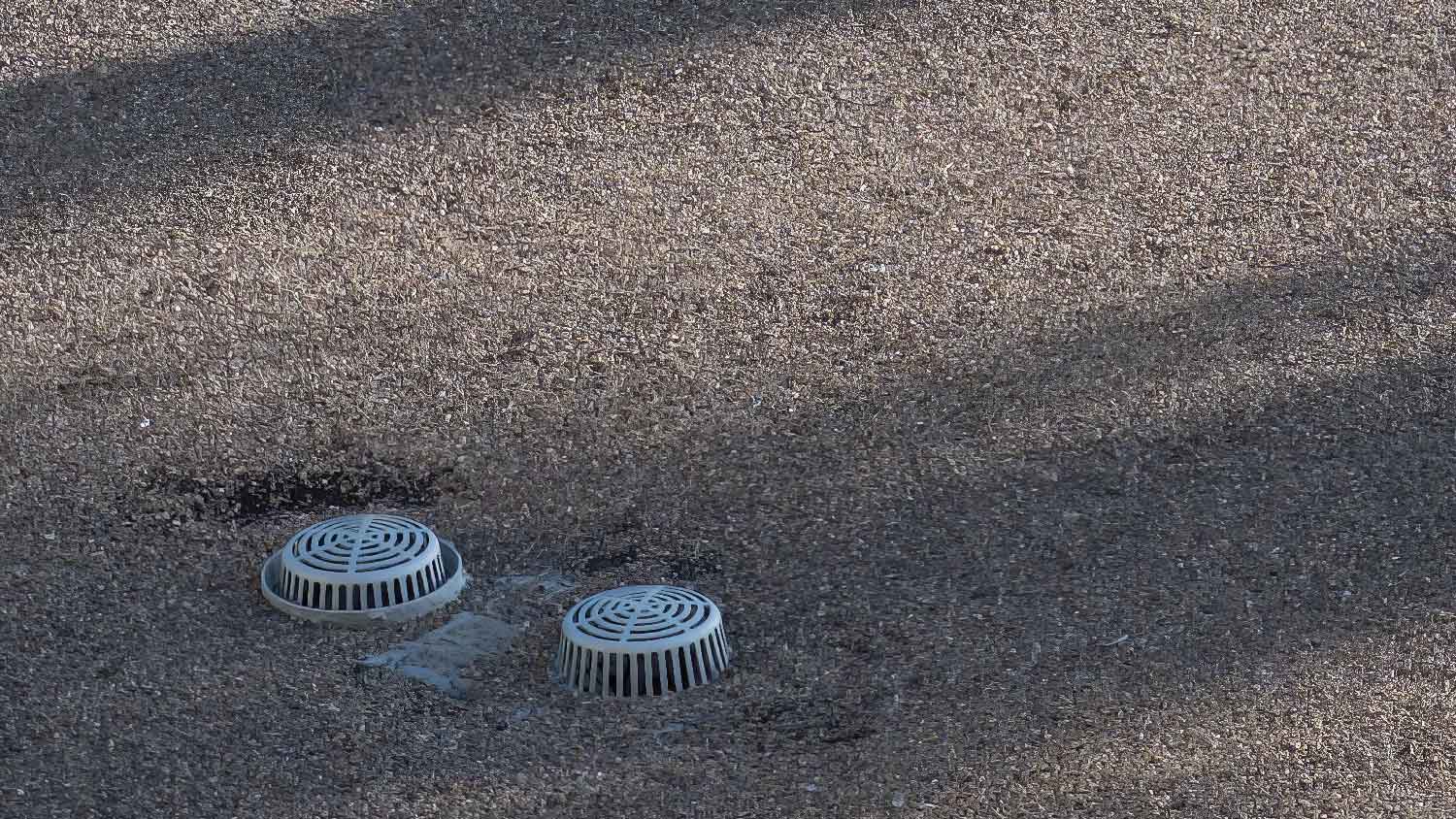
Built-up roofing, also called BUR or “tar and gravel”, has been around since the 1850s. Installation requires seven layers on top of a flat roof decking, which includes the insulation, asphalt, cover board, ply sheet, asphalt, and a reflective roof coating.
BUR roofing is easy to maintain, has good fire and UV resistance, and works well in extreme weather; however, you may run into issues like water pooling, cracks, or split joints without proper installation or maintenance. Built-up roofs can have a limited lifespan of just 10 years, depending on the quality, and they’re only suitable for flat roofs.
| Pros | Cons |
|---|---|
| Very affordable | Only for flat roofs |
| Fire-resistant | Prone to leaks |
| Resists fading | Limited lifespan |
Best For: Saving money on flat roof replacement
The many factors that play into choosing a roofing material may surprise you, such as durability, cost, style, and the climate in which you live. Many homeowners choose asphalt, but there are various types on the market. A roofer can advise you on the best materials for your home and region.
How to Choose an Affordable Roofing Material That’s Unique
When it comes to choosing an affordable roofing material that suits your needs and your budget, there are a few things you’ll want to consider.
Local building codes: First and foremost, you should ensure your roofing alternative is allowed by building code in your area. Some municipalities or even HOAs restrict the types of roof you can have due to flammability, weight, conformity, and more.
Up-front cost: Of course, when considering a more affordable roofing material, your budget will likely be a determining factor. Check prices with local roofers to see what options fit inside your cost constraints.
Longevity: Consider the lifespan of your roofing alternative alongside the up-front cost. A roofing material that costs twice as much but lasts three times as long as an asphalt roof will still save you money over time.
Environmental friendliness: It’s always a good idea to consider how environmentally friendly a roofing material is, especially if you’re looking to make your home more sustainable. You might even be eligible for tax incentives if you choose a more eco-friendly roofing material.
Insulation: If you live in an extreme climate, think about the level of insulation your alternative roofing material provides. You might save money up front by choosing a less insulative option, but you’ll end up paying more in heating and cooling bills.
Roof slope: Some roofing alternatives, like built-up roofing, single-ply roofing, and green roofs, are only suitable for flat roofs. Most others are only options for sloped roofs.
Aesthetic: Finally, consider your personal preference for how your roofing alternative looks. Remember, you don’t always have to conform to your neighbors’ homes, but you should consider how your roofing option will affect the resale value, as some buyers will prefer a conforming roof material.





- Roofers
- Metal Roofing
- Roof Repair
- Roof Inspection
- Vinyl Siding Repair Contractors
- Flat Roofing Companies
- Commercial Roofing
- Emergency Roofing Companies
- Leaky Roof Repair
- Metal Roof Repair
- Business Roof Repair
- Flat Roof Repair
- Tile Roof Repair
- Slate Roofers
- Rubber Roofers
- Roofing & Siding
- Metal Roof Installation
- Affordable Roofing
- Roof Sealing
- Attic Ventilation Contractors
- 13 Types of Roofing Materials and How to Choose the Right One
- 30 Common Roofing Mistakes You Need to Know
- Everything You Need to Know About Single-Ply Roofing
- 6 Benefits of Energy-Efficient Roofs
- Pros and Cons of EPDM Roofing
- What Is TPO Roofing? And Is It Right for Your Home?
- TPO vs. EPDM Roofing: What’s the Difference?
- Energy-Efficient Roofing: Here’s What to Know
- 9 Warning Signs You Need a New Roof
- 4 Best Roofing Materials for When You're on a Budget












